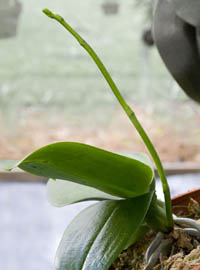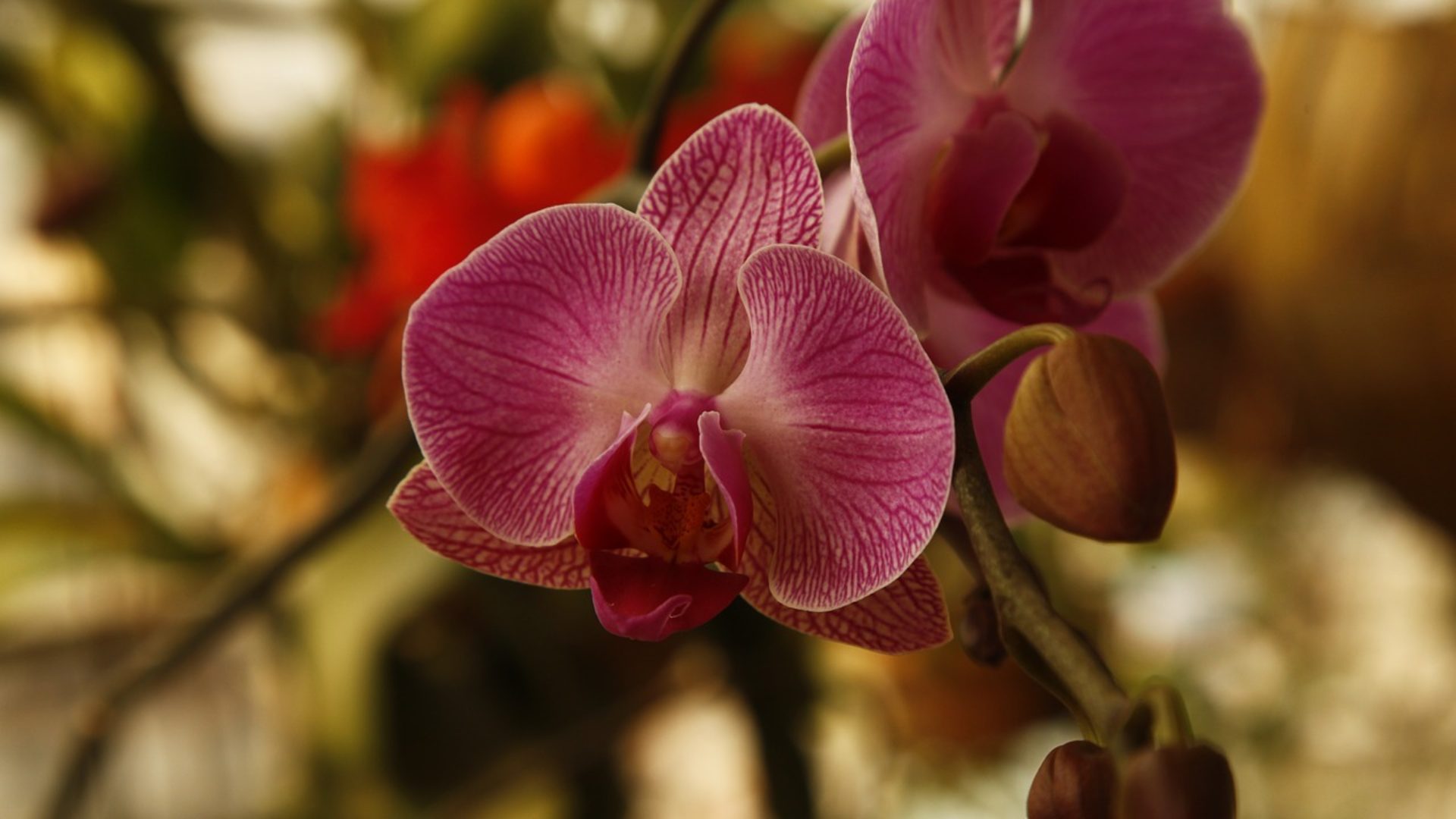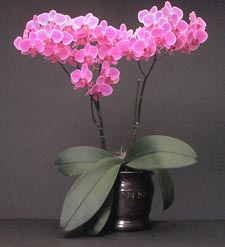If you have bought or were lucky to receive an orchid as a holiday gift, you are about to enter the world of growing these great plants!
Water
How often you water will depend upon the type of orchid and the potting medium. In this issue, we are specifically addressing Moth Orchids, or Phalaenopsis; the most popular orchid for the home. Bark keeps less water than moss. Watering once a week is usually sufficient, if your plant is putted into a pot filled with bark. Water when the top feels dry, if your plant is putted into a pot filled with moss. Another good method is to stick a wood or bamboo skewer down into the pot, being careful to avoid the roots. Take out the skewer and if it feels damp, your plant does not need water. After a few waterings you will be able to tell by the weight of the pot whether or not it is time to water again. If in doubt, wait a day.
When you water an orchid you want to let the water run through the plant for a minute or so. Don’t use cold water because this will shock the plant. Don’t use salt softened or distilled water. Take your orchid to the sink and let lukewarm water run through the pot to water completely and carefully. Be sure to let the plant flow water away completely. If water remains in the crown of Phalaenopsis plants (where the leaves join in the center), it can provide a perfect condition for fungus or bacteria to do their dirty work. Use a paper towel to make the water dry to prevent crown rot from happening.
The amount of light and heat your plant gets will also affect how quickly your orchid needs watering. Summer months will need more often watering, winter will need less.

Light
Phalaenopsis are ‘low’ light orchids. If protected by a sheer curtain, they grow beautifully in an east window and can be grown in a south or west window. A Phal’s leaves should be a medium green. If they are darker it means the plant is not getting sufficient light; red tinged leaves mean the plant is receiving too much light. When the plant is in bloom you can place it anywhere in your home out of direct sunlight. Other orchids can take more light but it is best to avoid direct sun because this can burn the leaves. Experiment and watch the results. You do not want to burn your orchid but you need to give it sufficient light so that new flowers will start to exist during its blooming season.
Temperature
Phals are easy to grow because they get pleasure from the same temperatures we do – above 60°F at night and a range of 70° to 80° or higher during the day. Other orchids can accept higher or lower temperatures at night.



